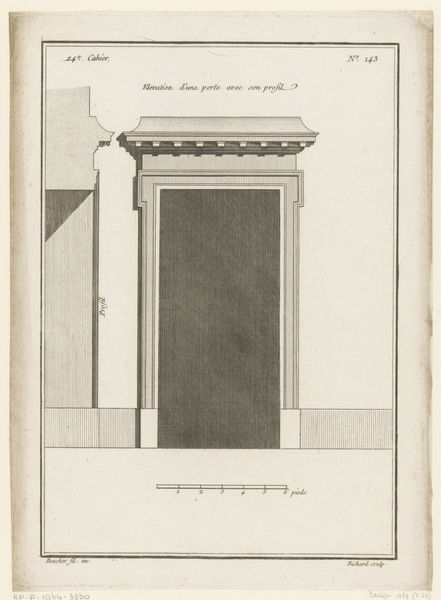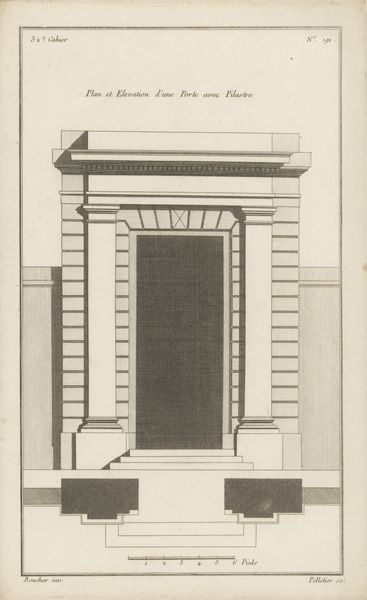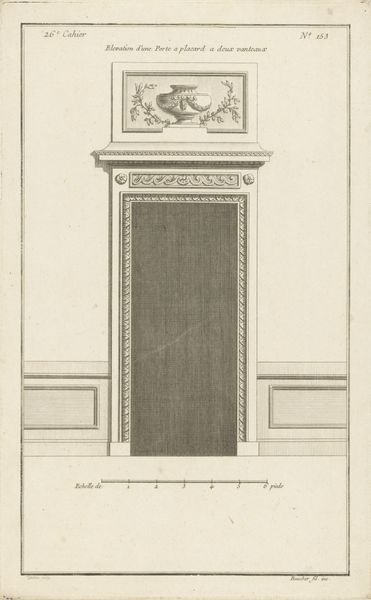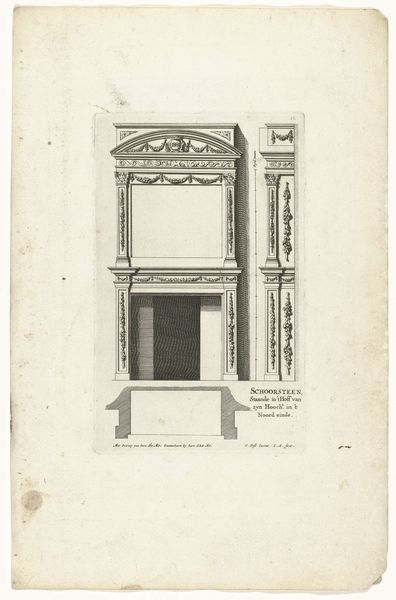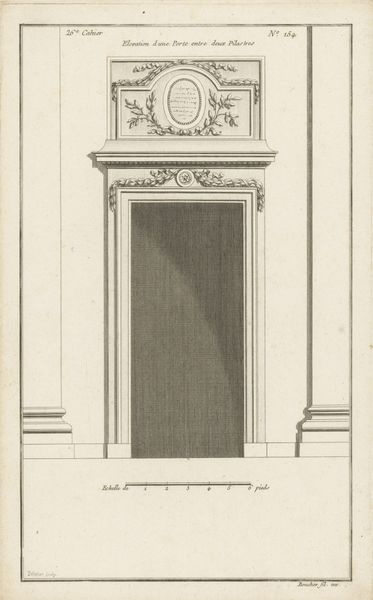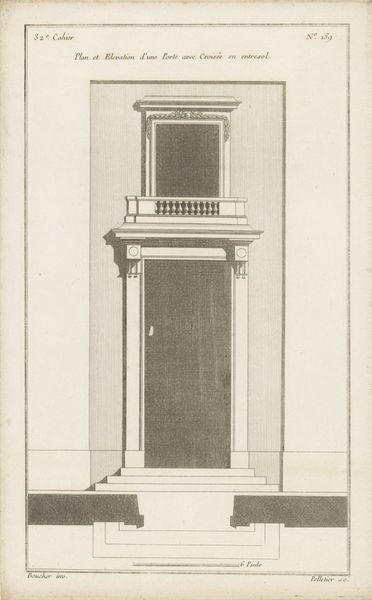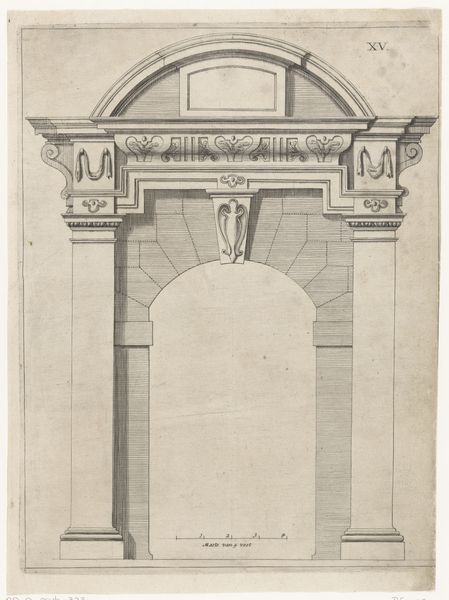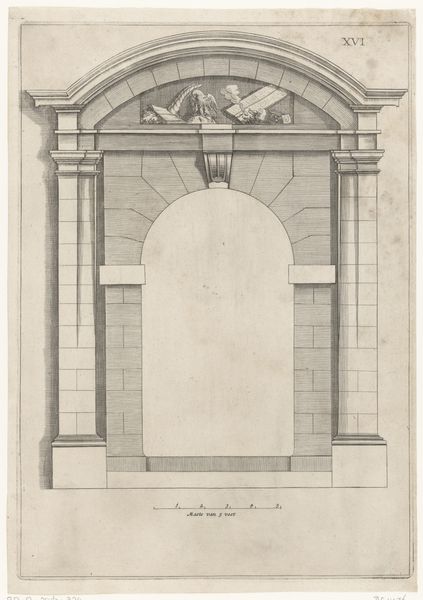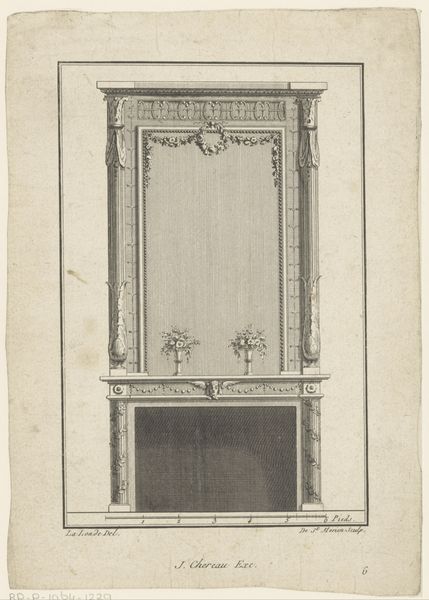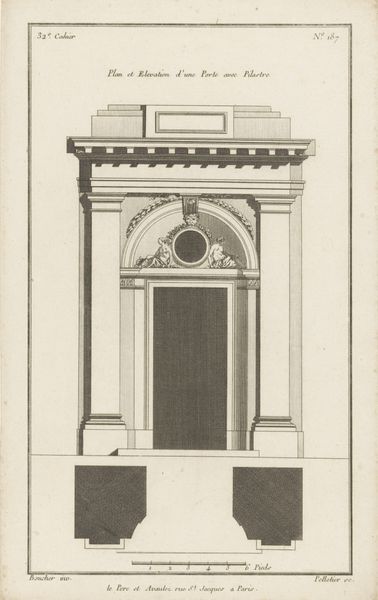
drawing, print, etching, engraving, architecture
#
drawing
#
neoclacissism
# print
#
etching
#
old engraving style
#
geometric
#
line
#
academic-art
#
engraving
#
architecture
Dimensions: height 294 mm, width 213 mm
Copyright: Rijks Museum: Open Domain
Curator: Here at the Rijksmuseum, we're looking at Jean-Baptiste Bichard's print, "Poort met guirlandes," made between 1772 and 1779. It's an etching and engraving of a doorway design. My first impression is one of measured formality. It's austere but the floral garland softens the design somewhat. What stands out for you? Editor: Curator:The meticulous linework, for me, speaks volumes about the era's manufacturing processes. The level of detail achievable through etching and engraving—it reveals the skilled labor that went into these designs. Consider the societal value placed on this craft! It contrasts so sharply with today's mass-produced items. Curator: Certainly! And Bichard employs neoclassicism— the imagery consciously evokes earlier artistic ideals, echoing Greek and Roman motifs. The garlands themselves often represented celebration, joy, and perhaps most importantly, accomplishment in ancient art. Editor: Do you think the print served purely as a functional architectural document, or was there a desire to elevate the craft, too? You can almost feel the negotiation between functionality and display in the design process. Also the materials. This kind of art piece will likely require high-quality materials Curator: I believe there's an aspirational element. Presenting architecture this way imbues it with a kind of timeless quality. Note the geometric regularity - a concept resonating with Enlightenment values of order and reason, with each detail hinting to stories of tradition. It signifies, if nothing else, an attempt to control nature. Editor: I agree completely. I wonder though if there’s commentary being offered on the increasing homogenization of aesthetic values for architecture and design during this period. Does Bichard adopt, resist or complicate those norms through his creative treatment and utilization of craft techniques? Curator: It's a very good point, how he navigated those conflicting ideals. Viewing the garland as a cultural symbol allows us to look into that tension - the traditional with emerging aesthetic sensibilities. Editor: The combination is, to say the least, quite interesting. It feels like one of the last moments when the hand of the craftsman was so evident. We should definitely explore that further sometime. Curator: I'd like that very much. Perhaps our visitors might consider what doors mean to them symbolically in the context of Bichard's work. What possibilities they represent, what transitions.
Comments
No comments
Be the first to comment and join the conversation on the ultimate creative platform.
